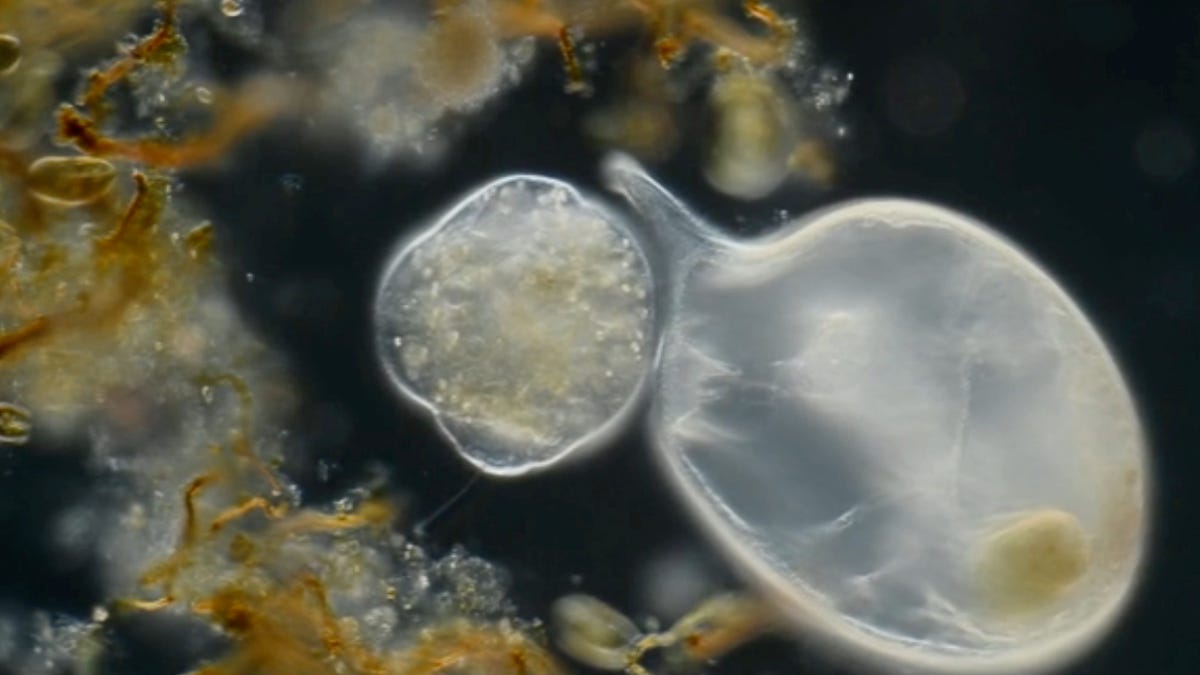Microscopic predator devours prey in award-winning video
Watch a compilation of the top videos in Nikon's Small World in Motion competition, which also includes the roiling guts of a termite and a wasp larva breaking out of its host.
When it comes to dazzling film sequences -- especially in sci-fi and fantasy movies -- bigger tends to be better. Epic battles between thunderous armies, massive spacecraft and city-destroying fights between superheroes and supervillains all bring big box office success. But you don't need millions of dollars of special effects to record something astonishing -- just a microscope. Case in point: Nikon's Small World In Motion Photomicrography Competition.
The winners of the competition -- which has been running annually since 2011 and focuses on images taken through a microscope -- were announced Wednesday, and there are some doozies among the top awards. You can see a compilation video embedded below.
First place went to Wim van Egmond of the Micropolitan Museum in the Netherlands, who captured a ciliate predator known as trachelius devouring its prey, another ciliate called campanella. Ciliates are single-celled organisms also known as protozoa that use the movement of cilia, hairlike projections, to move around.
Van Egmond, who has previously won first place in Nikon's Small World still photography competition, made this video from some water he scooped from a friend's backyard pond in an effort to get her to take more of an interest in microscopy.
"Wildlife is so close to us, yet most of us never look close enough to see it," van Egmond said in a statement. "A pool in your garden is actually a miniature underwater jungle teeming with life. If you want to see the world, your backyard is a great place to start."
Danielle Parsons from the US took second place. Parsons is the host of a YouTube channel called Wonder Science TV. Her video shows the gut of a termite, where microbes help the insect break down wood it had ingested.
In third place is a video from Gonzalo Avila, a PhD candidate from The University of Auckland, which shows a parasitic wasp larva breaking out of its caterpillar host and spinning itself a cocoon. The video is pretty creepy to watch, but it might help to know that the caterpillar -- which would become a Gum-Leaf Skeletoniser moth -- is itself a pest damaging trees in Australia and New Zealand, and the wasp helps keep their population under control. The caterpillars also have poisonous stinging spines. The actual process by which the wasp busts free and spins its cocoon can take a few hours, but Avila's video is sped up 64 times to show the whole process in just a few minutes.
In addition to the top three prizes, 15 other entrants also received honorable mentions -- and don't worry, they don't all have to do with death, guts and and parasitism. There's a video of what happens after a starfish egg is fertilized; the development of a mouse-whisker follicle; the cardiovascular system of a four-day-old zebrafish; and even some psychedelic soap film on water.
For links to all the videos in their entirety, check out the Small World in Motion site.
"Beyond still images, video has become a powerful tool for artists and scientists to show the life and movement they see under the microscope every day," Nikon's Eric Flem said in a statement. "This competition serves as a platform to share those discoveries with the world, and hopefully inspire others to pick up a microscope and take a closer look."
If you're so inspired, Nikon will be accepting entries for the 2016 competition until April 30.


